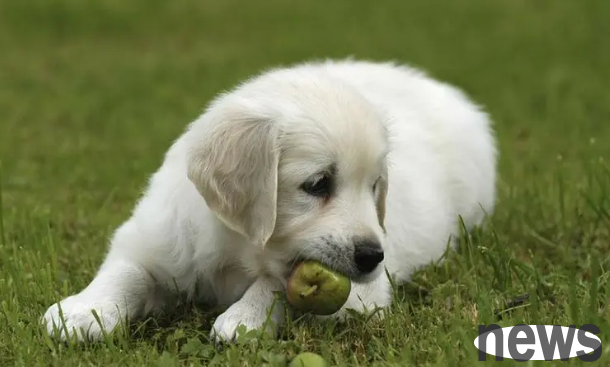Dogs are cute and loyal friends of human beings. If they are well trained, they will become their master's right-hand assistant. When dogs are old, weak, sick and disabled, they are prone to infection with fungal skin diseases. Dogs at this time need more care from their owners!
Fungal skin diseases in dogs are parasitic to dog hair, epidermis, and toes and claws and reproduce in large quantities, causing a series of organic lesions in local skin. They are one of the most common infectious skin diseases in dogs.
Fungal skin diseases often occur in young dogs, elderly dogs, and dogs with weak constitutions and low body resistance. It is manifested as round hair loss spots, itchy skin, scales, scabs, etc. on the skin. Fungi that cause skin infections in canine mainly include Microsporidium canis, Microsporidium gypsum-like and Trichophyton sarcophagus. The transmission of canine fungal diseases is mostly contact-based and zoonotic infectious diseases, and there are no obvious seasonal factors.

5 molds have been found to cause skin mycotic diseases in dogs, namely: Microspora canis, Microspora gypsum-like, Trichophytonus, Microspora Oduane and Microspora deformed.
Beware that artificially creates the most suitable living environment for fungi
The incidence of hot and humid climate is high, the high air humidity, humid living environment, uncleanness, frequent blowing or blowing without drying after taking a bath, etc., all of which have created a good adaptation environment for fungi to survive.
Young animals are more susceptible to infection than adult animals. Puppies or older dogs have less resistance and have no more immunity to fight fungi, which will give fungi an organic opportunity.
The malnutrition and weaker body are prone to infection, those who do not eat dog food for a long time or eat low-priced dog food, as well as those who eat meat, animal liver for a long time, will cause unbalanced nutritional intake of dogs, lead to a lack of vitamins and trace elements in the body, reduce resistance, cause fungal infection and it is difficult to recover.
Frequently over-clean dog's hair, or often use alkaline shower gel to bathe the dog, so that the dog's skin oil protective layer is damaged. There are several types of fungi, and the symptoms are different.
1. Microspora canis: More than 70% of the cases of canine tinea dysfunction are caused by it, and many animals and people can be infected. The lesions are mainly small round-like crusts (金金) on the surface of the skin. This focal crusted skin lesions can occur in any part of the dog, but the ears, face, neck and tail are the most common. This lesions, which are mainly skin scabs, are often not accompanied by hair loss. When there are not many lesions, especially in long-haired dogs, they are often not discovered. Microspora canis mainly causes tinea capitis in humans.
2. Gypsoma Microsporus:
survives in the soil and can cause skin mycotic diseases in various animals and humans such as canines. This disease is onset and has serious damage. The site of its occurrence is similar to that of microsporus. Except for round tinea dysfunction, it sometimes causes large-area skin lesions. The lesion is covered with hair, dandruff and scabs appear, and when bacterial infection occurs, exudative suppuration occurs locally. It can last for months or even years after turning to chronic.
3. Microspora Auduane and Trichophytonus:
These two bacteria cause canine skin mycotic diseases. These two types of molds can also infect people. The former mainly causes tinea capitis in children, and the latter is the main pathogen of tinea foot in the United States. Dogs are usually infected by contact with patients.
Fungal skin diseases are extremely contagious
Fungal fungi have extremely strong vitality and resistance, and can parasitize animals and plants or spread in the air with dust, and there are many opportunities for transmission. It will be transmitted through direct contact, but contact with contaminated instruments, combs, scissors, pads, etc. can also cause indirect infection. Both animals and humans and dogs can be contagious.

Be sure to blow dry after taking a bath!
Many shovelers will bathe their dogs at home, but they do not blow dry the hair on their dogs in time after washing. Or because you are not professional, you do not completely and thoroughly blow dry your hair, especially for dogs with double-layer hair. The base hair is not easy to dry, which will cause safety hazards to the skin and create a living space and adapt to the environment for fungi.
For dogs with long beards and big ears, sometimes eating and drinking water will make their mouths or ears wet and dirty. Pay attention to cleaning them in time to keep their hair dry and tidy.
To treat fungal skin diseases, the most important thing is to use a medicine bath and spray medicine. Wash, soak and press. First rinse with a cleaning bath, remove dandruff and scabs, clean off the shedded and broken hair, and then apply the medicine bath solution to the whole body to avoid the spread of fungi. Massage the affected area for 10 minutes, soak for 10 minutes, and then rinse it clean. It should be noted that you should blow dry after washing, especially the base hair must be blown dry. Apply sterilization medicine to the affected area every morning and evening, and cooperate with a fungal medicine bath until it is completely cured.
Strengthen nutritional supplements
At the same time, pay attention to strengthening nutrition. The diet should contain enough protein and pay attention to supplementing various vitamins, minerals and trace elements to enhance the body's resistance. Pay attention to cleaning the hair, keep it clean, and prevent scratches.
In normal times, dogs rarely experience this situation. Preventing problems is greater than treating them. I hope that all poop shovelers can be good guardians of dogs and help them avoid illness and torture!
